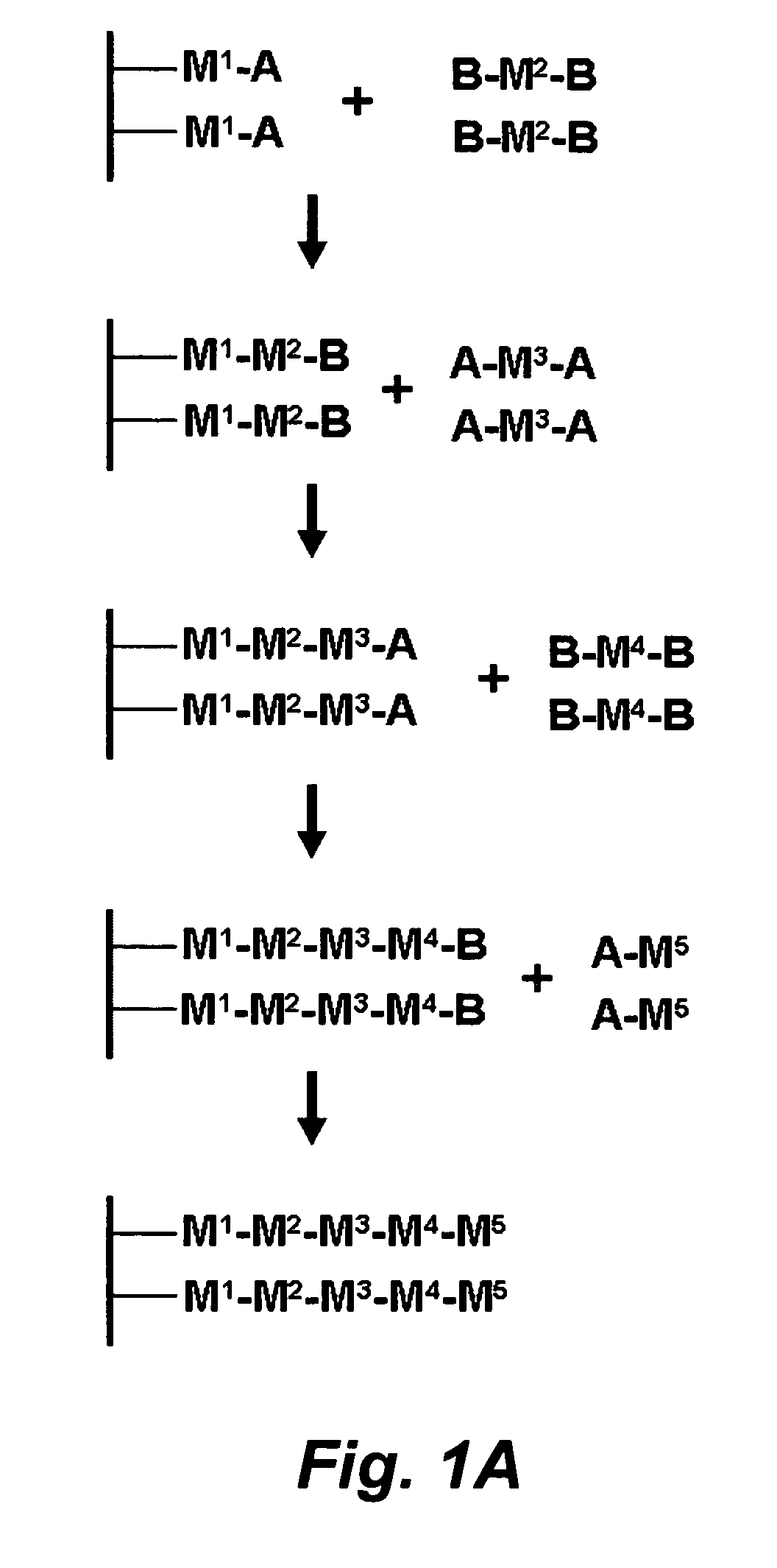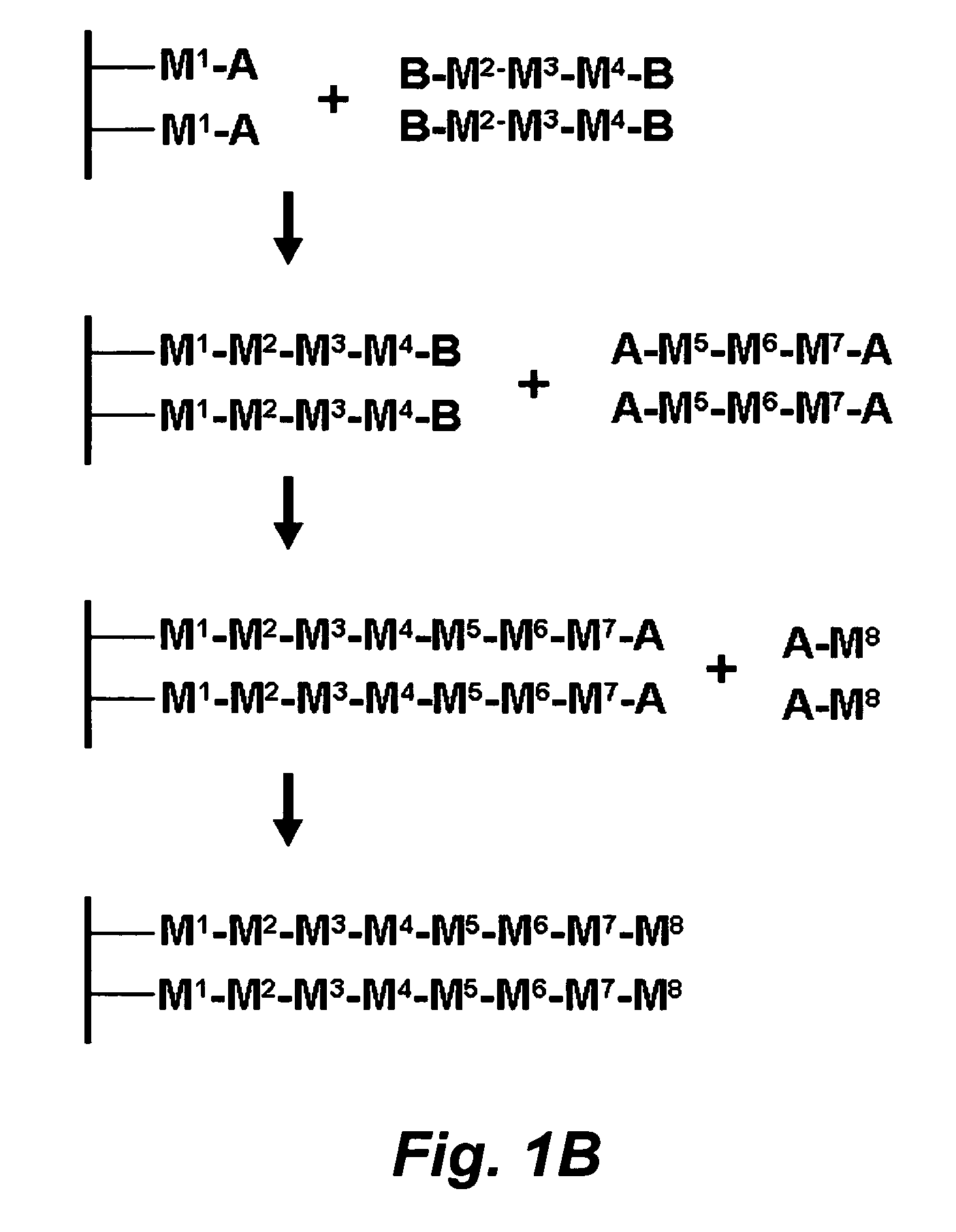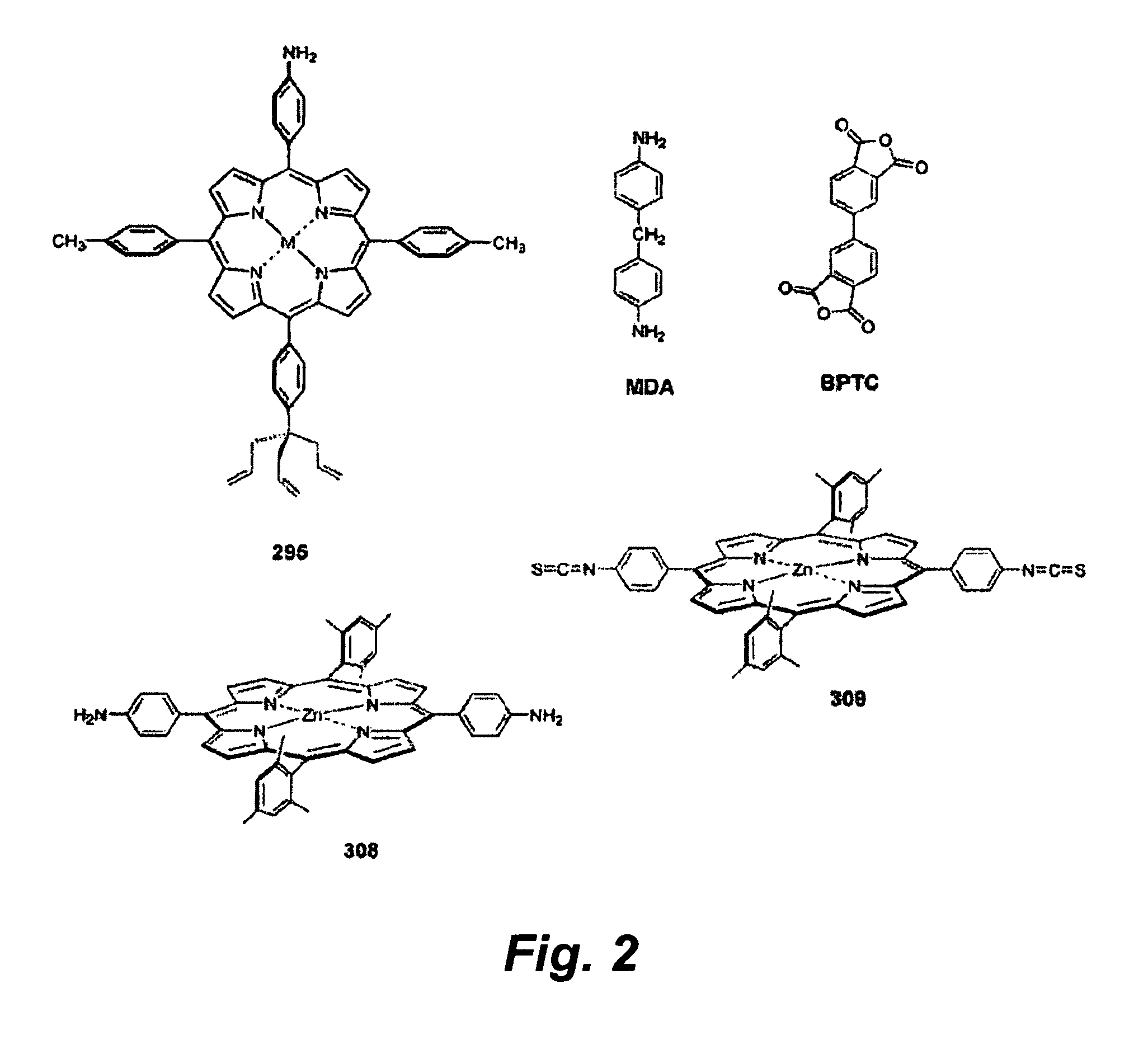Stepwise growth of oligomeric redox-active molecules on a surface without the use of protecting groups
a redox-active, stepwise growth technology, applied in the field of organic chemistry, can solve the problems of reducing affecting the synthesis efficiency of polymeric molecules, so as to prevent charge leakage
- Summary
- Abstract
- Description
- Claims
- Application Information
AI Technical Summary
Benefits of technology
Problems solved by technology
Method used
Image
Examples
example 1
Stepwise Synthesis Using an Imide-Forming Reaction
[0173]The stepwise growth process was tested using an imide forming reaction. In this experiment, a porphyrin containing an allyl tripod and an opposite 4-aminophenyl group (No. 295, FIG. 2) was first attached to a p-type Si(100) suface. Attachment to the surface occurs by reaction of the allyl groups to produce Si—C linkages. The polyimide was grown off the porphyrin base layer (FIG. 3). Growth was affected by depositing a solution containing either BPTC or MDA (FIG. 2) on top of the porphyrin and heating at 230° C. for two minutes.
[0174]The process was monitored using reflectance IR spectroscopy (FIG. 4). The bottom two spectra shown are those of the porphyrin in a solid KBr pellet and attached to the surface. The upper spectra show the effects of stepwise addition of BPTC and MDA. The third spectrum from the bottom shows the affect of the addition of BPTC. The bands at 1723 cm−1 are the signature of the imide linkage formed by rea...
example 2
Investigation of Stepwise Covalent Assembly on a Surface Yielding Porphyrin-Based Multilaver Architectures
[0175]Porphyrins have been shown to be a viable medium for use in molecular-based information storage applications. The success of this application requires the construction of a stack of components (“electroactive surface / tether / charge-storage molecule / linker / electrolyte / top contact”) that can withstand high-temperature conditions during fabrication (up to 400° C.) and operation (up to 140° C.). To identify suitable chemistry that enables in situ stepwise assembly of covalently linked architectures on an electroactive surface, three sets of zinc porphyrins (22 altogether) have been prepared. In the set designed to form the base layer on a surface, each porphyrin incorporates a surface attachment group (triallyl tripod or vinyl monopod) and a distal functional group (e.g., pentafluorophenyl, amine, bromo, carboxy) for elaboration subsequent to surface attachment. A second set de...
PUM
| Property | Measurement | Unit |
|---|---|---|
| length | aaaaa | aaaaa |
| temperature | aaaaa | aaaaa |
| thick | aaaaa | aaaaa |
Abstract
Description
Claims
Application Information
 Login to View More
Login to View More - R&D
- Intellectual Property
- Life Sciences
- Materials
- Tech Scout
- Unparalleled Data Quality
- Higher Quality Content
- 60% Fewer Hallucinations
Browse by: Latest US Patents, China's latest patents, Technical Efficacy Thesaurus, Application Domain, Technology Topic, Popular Technical Reports.
© 2025 PatSnap. All rights reserved.Legal|Privacy policy|Modern Slavery Act Transparency Statement|Sitemap|About US| Contact US: help@patsnap.com



